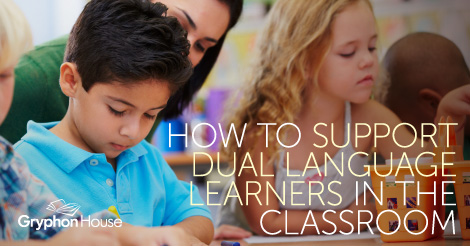
Teaching a dual language learner, or DLL, can seem like a daunting task to many teachers. As early childhood classrooms continue to become increasingly diverse, strong “interpersonal, intercultural, and cross-cultural communication skills” are priceless tools every teacher should have. Effective communication is a crucial part of developing young children’s academic and social skills, and lays a solid foundation for success throughout their lives- especially in the diverse, global world.
Jennifer J. Chen’s book, Connecting Right from the Start: Fostering Effective Communication with Dual Language Learners, is full of several creative resources for the early childhood classroom. Chen’s book provides teachers with the information and tools they need to accommodate and understand ELLs, as well as students with disabilities.
Here are a few of Chen’s strategies for supporting your ELL students!
Teaching Strategies for Consideration:
- Cultivate a caring and respectful leaning community where all children can feel comfortable, motivated, and confident in what they do. One of the first steps you can take to start cultivating such an atmosphere is to help children lean one another’s names (and their meanings, if possible) as well as some greetings and polite phrases. For example: “How are you?” “I am fine. Thank you.”
- Design developmentally, culturally, and linguistically appropriate activities that capitalize on the children’s intellectual strengths in learning to communicate effectively. Assign DLLs (Dual Language Learners) to activities that match their developmental levels and learning needs. For instance, engage Milo, a Spanish-speaking child from Mexico, in a language matching game on the computer that requires him to match some simple Spanish words with their corresponding English words.
- Observe and attend to a child’s unique communication behavior and cues and then respond to them accordingly. Watch the nonverbal behaviors of a DLL with limited English or with language delays to figure out what he is trying to tell you. Listen to a DLL who can verbally articulate her needs and wants in English. In both cases, although the approach is different, similar strategies can apply, including giving the DLL your undivided attention, kneeling down to the child’s level, making eye contact if it is appropriate for the child (eye contact may be intimidating to a child from a culture where such a behavior is not desired), and asking questions to show your care and interest.
Other strategies for encouraging DLLs to communicate:
- Break verbal directions into single steps, and use gestures or models to support understanding.
- Speak slowly, allow for pauses, and simplify your message.
- Allow extra time for processing and translating information and requests. Remember that an inability to state something in the English language may not be an accurate reflection of a child’s cognitive ability.
Author(s)Jennifer Chen
Anna Wilmoth
Marketer. Publisher. Reporter. Educator. Mother. Runner. Explorer. Anna served as director of marketing for Gryphon House from Oct 2014 - May 2017.

